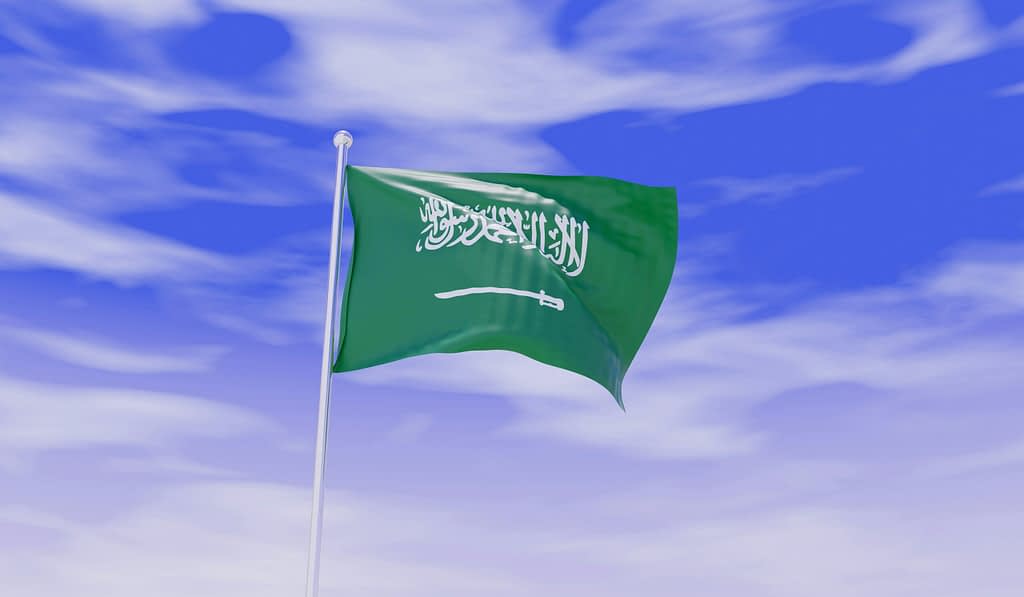Following Donald Trump’s return to the White House, attention turns to his first foreign trip, which heads to Saudi Arabia. The US President hopes to secure investment commitments of up to $1 trillion. However, these ambitions may clash with the costly economic transformation that Crown Prince Mohammed bin Salman (MBS) himself is pursuing in the kingdom.
A Costly Vision of the Future
According to estimates compiled by Bloomberg, transforming the oil-dependent economy will cost nearly $2 trillion. The scale of domestic commitments – calculated based on interviews with people familiar with the plans, US government projections, Saudi estimates, and data from research firm MEED – is fundamentally changing the kingdom’s role in the global economy.
The largest investment plans include:
- Futuristic city Neom with estimated costs exceeding $1.5 trillion (originally projected at $500 billion in 2017)
- Hosting World Expo 2030
- FIFA World Cup 2034
- AFC Asian Cup 2027
- The Trojena project (part of Neom) with 30 kilometers of ski slopes for the 2029 Asian Winter Olympics
From Creditor to Debtor
The decades when Saudi Arabia earned more money than it spent domestically are in the past. High domestic spending and falling oil prices have caused a reversal. The petrodollar tap is still producing vast amounts of cash, but transforming the Saudi economy is an expensive undertaking.
“Trump is chasing $1 trillion of investments, but Saudi Arabia can’t deliver it,” says Ziad Daoud, chief emerging markets economist at Bloomberg Economics. He points out that the kingdom’s current account has turned negative over the past year. “Saudi Arabia has become an importer of capital even with oil prices at relatively high levels, and it’s likely to remain so until at least 2030. That’s going to reshape its relationship with the global economy.”
Reality Versus Ambition
Even if Saudi Arabia presents large investment figures during the visit and unveils a series of business partnerships, much of the money won’t reach the US economy in the foreseeable future.
“$1 trillion of new trade and investment over the next four years is not going to happen,” says Tim Callen, a visiting scholar at the Arab Gulf States Institute in Washington. “It would represent a huge increase on recent levels and would basically represent all the assets of the PIF and close to a full year of GDP.”
Finding Common Interests
MBS has already helped Trump secure lower gasoline prices at home by boosting crude production. This contrasts with President Biden’s visit to Saudi Arabia, which left him empty-handed after asking the crown prince for help addressing rising inflation.
The Saudi business community is receiving calls from government ministries seeking information about planned trade and investments with the US in the coming years. Large contracts related to the development of MBS’s economic transformation plan are likely to be awarded to US firms.
Economic Pressures
Current oil prices around $63 per barrel, however, put additional pressure on the kingdom. Bloomberg Economics estimates that Saudi Arabia needs a price of $96 per barrel to balance its budget, and $113 if domestic spending by the PIF on MBS’s projects is included.
“Any external demands will only add pressure to an already stretched position,” says Monica Malik, chief economist at Abu Dhabi Commercial Bank PJSC. The Saudi government and the PIF have already begun postponing some domestic investment plans and could delay them further or scale back some of their most ambitious plans. This would give them more room for short-term spending.
Rising Debt
The country’s strained finances have begun to manifest in the increasing pace of Saudi debt issuance. The government borrowed the most on record in the first quarter, even more than in the depths of 2020 when oil prices briefly turned negative.
Nevertheless, Saudi Arabia’s total debt stands at $354 billion, only about 30% of gross domestic product and low compared to most other governments. It has over $400 billion in foreign reserves deposited with the central bank, and a large portion of these are US Treasury bonds.
“The current account will be in deficit in the coming years, meaning there will be no new money to invest overseas,” says Callen. “So they will either have to borrow or sell existing investments to finance new investments in the US or elsewhere.”




